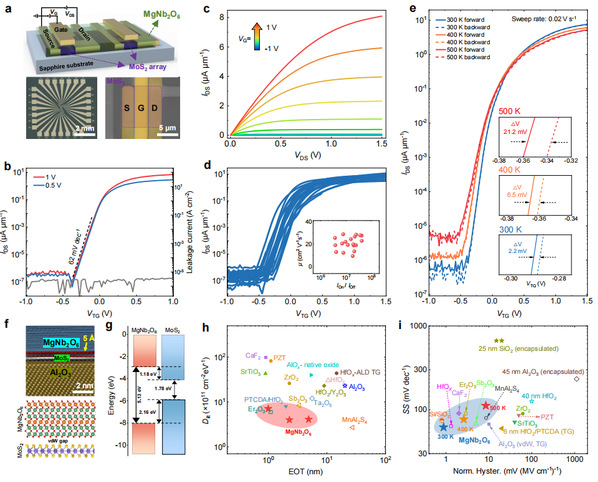A research team led by Prof. Xu Chengyan from the School of Materials Science and Engineering and Prof. Qin Jingkai from the School of Integrated Circuits at Harbin Institute of Technology, Shenzhen (HIT Shenzhen) has achieved significant progress in the field of two-dimensional (2D) integrated circuits. Their groundbreaking work, titled Magnesium Niobate as a High-κ Gate Dielectric for Two-Dimensional Electronics, was recently published in Nature Electronics. The study developed ultrathin single-crystal magnesium niobate (MgNb₂O₆) as a high-κ gate dielectric for 2D field-effect transistors (FETs), overcoming critical challenges in integrating 2D semiconductors with ultrathin dielectric layers and enhancing device electrical reliability, thereby advancing practical applications of high-performance 2D transistors and integrated circuits.
As silicon-based chips approach their physical scaling limits, issues such as short-channel effects and gate leakage increasingly hinder performance improvements. 2D semiconductor channel materials (e.g., MoS₂, WSe₂) offer superior gate control and leakage suppression, making them a promising pathway for next-generation high-density logic chips. However, conventional dielectric deposition methods, such as atomic layer deposition (ALD), often introduce high defect densities and poor interfacial quality, degrading device performance. Van der Waals (vdW) integration of single-crystal high- dielectrics with 2D semiconductors has emerged as a key strategy to address these challenges.
Xu and Qin’s team successfully synthesized atomically thin MgNb₂O₆ single-crystal films using a mica substrate buffering and spatial confinement approach. The material demonstrated exceptional dielectric properties across a wide temperature range (300–500 K), including a high dielectric constant (15–20), large breakdown strength (13–16 MV·cm⁻¹), and a projected breakdown lifetime exceeding 100 years. When applied as a top-gate dielectric in monolayer MoS₂ FET arrays, the devices exhibited an ultrahigh on/off ratio exceeding 4×10⁷, a near-ideal subthreshold swing (SS) of 62 mV·dec⁻¹, minimal hysteresis (0.9 mV/(MV·cm⁻¹)), and outstanding thermal stability. Furthermore, the team fabricated fully 2D short-channel (50 nm) inverters using MgNb₂O₆, achieving a voltage gain of 13.3 at a 1 V driving voltage.
This breakthrough provides a critical solution for developing highly integrated, low-power 2D integrated circuits capable of operating in extreme environments.
Paper link:
https://www.nature.com/articles/s41928-024-01245-6




